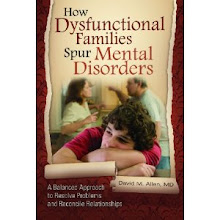In my post of December 3, 2024,
I discussed the reasons for the fact that there are hundreds of different “schools”
of psychotherapy in use today, each
with their own theories to account for problematic behavioral, relationships,
and thought patterns in individuals. Most of them are variations on the six
major schools of thought in the field: psychodynamic, cognitive, behavioral,
affect-focused, existential, and family systems. Still, they often have
completely different ideas about what is important to focus on in psychotherapy
and what techniques to use.
New
techniques continue to proliferate at an alarming rate. An increasing number of them are being developed to treat, for
example, members of racial and ethnic minority groups. Some have been politicized. This situation is becoming even worse as the quality of psychotherapy is declining, as I described in my
post of 4/10/25.
I’ve
also discussed the psychotherapy “integration” movement, an attempt to put some of these ideas together, as exemplified by the
organization Society for the Exploration of Psychotherapy Integration (SEPI) It
has been around since the 1980’s. Unfortunately they seem to put little
emphasis on a completely integrated model for fear it would be just become yet another school. So they content themselves mostly with adding slightly altered versions
of techniques from one major school for use in another.
I attempted to form a more unified model which incorporates many of the valuable concepts from the major schools into a single framework way back in the late 1980’s, resulting in publication of my book, Unifying Individual and Family therapies, since re-titled a Family Systems Approach to Individual Psychotherapy. Since then, I've been joined by several people who have also been trying to do that, such as Jeff Magnavita, Andre Marquis, and Gregg Henriques. We each have somewhat different ways of doing so, which may sound like the society’s worries re more schools are well-founded - but these new unified models are very similar and have been a long time in development.
Andre MarquisThe
more integrative schools look at the fact that there are a huge number of interacting factors which lead to specific behavioral problems – both intrinsic to the brain and
external factors such as social ones. And every disorder, and individual
with a disorder, is usually subject to different combinations of them. Greg
Marquis has divided them up into four groups or quadrants. Example from
each are listed here:
Interior-individual:
self image, self concept, self efficacy, stability, depression and anxiety
Interior-collective:
relationships, cultural norms and meanings, family dynamics
Exterior-individual:
medical disorders, brain functioning, medication, diet, sleep patterns
Exterior-collective:
Socioeconomic status, neighborhood, environmental stressors, interpersonal and dynamics
and history, racism, sexism.
IMO, a clinical evaluation examining
factors in each of these areas is an absolute prerequisite for planning
strategies for change in any given individual. This requires a somewhat long session by therapists with a sense of leaving no stone unturned.
Magnavita and others also look
at processes occurring at various levels such as in the brain, within the individual's psychology, between
individual and family, and families and the larger social context. Unifiers
often notice what is referred to as parallel process, where there are similar problems and processes between levels, say, in the family and in the family's ethnic group. I write about shared
intrapsychic conflict, in which several members of the same family are all
conflicted about personal behavioral standards because of changes in the
ambient culture which require different ones than had been required before.
Therapists try to make a
determination about at which levels they might have the most leverage
for helping clients make changes and have useful therapeutic strategies for possible
interventions – such as medications for the brain, or family systems models for problems at the
border of the individual and the family. As the reader can tell, therapists
familiar with the widest range of models for change and individual strategies
to affect various aspects of the patient’s problems will have the most options
to choose from.
My unified model is a system
of interventions designed for those with personality disorders to change a
client’s interactions with attachment figures that trigger and reinforce repetitive
self-destructive behavior. (This would obviously be inappropriate for use with
other types of disorders in the DSM such as bipolar disorder, which is
primarily treated with medication. Some other disorders like panic disorder
can be a byproduct of dysfunctional family interactions and be treated both
medially and psychotherapy using my model).
My model addresses several important processes that were first described by the other major therapy models, in new, integrative ways. To greatly oversimplify, within a family, family behavior (family systems) leads to behavior in individuals which is reinforced on a variable intermittent reinforcement schedule by parents (behaviorism) which then creates a false self in individuals who are trying to stabilize unstable parents (psychodynamic). Patients keep the false self in line using defense mechanisms (psychodynamic) and irrational thoughts (cognitive). If they do not do this and try to “self-actualize” or follow their own muse (emotion-focused) they become subject to existential terror (existential therapy). Therapy aims to help patients understand family behavior through extensive family history (genograms) so that they can use empathy and a variety of strategies to get past parental defenses to discuss the whole process with them and put a stop to it.
Now, if only we all could just get the rest of the psychotherapy field to pay attention to this stuff.









No comments:
Post a Comment